Inyo County has confirmed that it is still in the process of negotiating the concessionaire contract with the selected respondent for the Tecopa Hot Springs Campground and Pools. As a result, officials say, TecopaCabana’s public records request related to the submitted applications remains on hold. “This PRA will be resumed once negotiations are complete,” the county stated in its latest communication.
“They did a walk through with the county two days ago and found out some of the requirements to open and are hoping 2 to 3 weeks have it open,” said Dan Leseberg, Tecopa’s newest EMT and bartender at Death Valley Brewing, said of the incoming concessionaire, writing to the community on the Facebook chat Happyville. “Too bad it all happened late in the summer. They are working on it though!”
In the meantime, some locals are opting for the local Borehole Spring, a wild hot spring on Bureau of Land Management (BLM) land just outside Tecopa.
For those following along, the timing underscores the complexity of finalizing management agreements for one of Tecopa’s most visible public assets. The hot springs have long been a crossroads of community values, economic opportunity, and questions of public access. Each stage of the contracting process has drawn close local attention, with residents voicing concerns over costs and the long-term vision for the park.
While the contract remains under negotiation, our records request represents a reminder of the community’s stake in the outcome. Many locals see access to documents not only as a matter of law, but as an essential step in maintaining trust between county officials, private operators, and the people who live alongside the springs.
As always, we’ll keep you posted when the paper trail resumes.
Restaurant at Delight’s Hot Springs to Reopen With Tacos
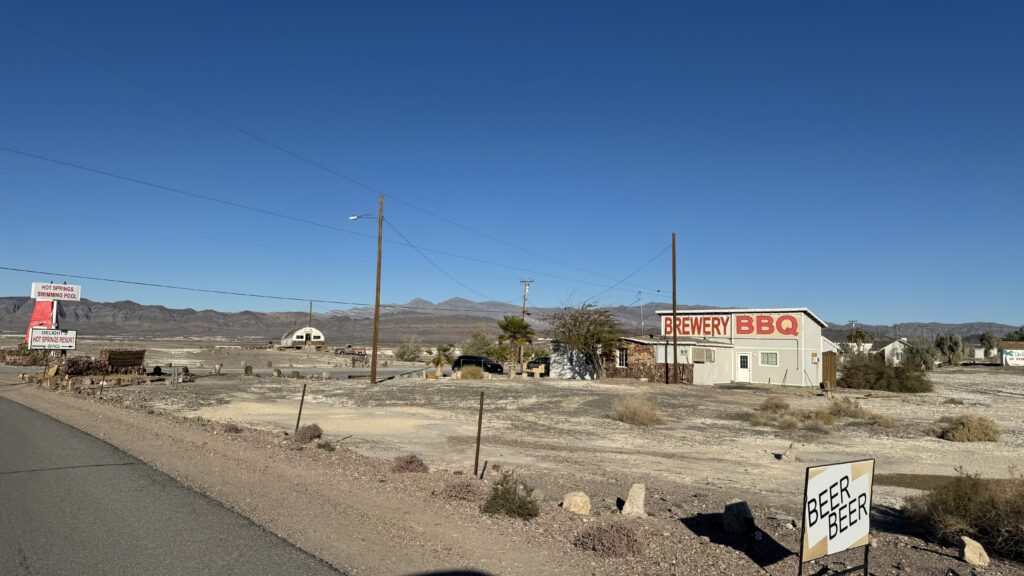
Word around Tecopa is that the long-quiet restaurant space at Delight’s Hot Springs Resort—also known as Death Valley Hot Springs—will reopen in just two weeks, this time serving tacos.
The property, a popular stop for overnight guests and day-soakers alike, shuttered its on-site brewery and BBQ restaurant last year while the building underwent code updates required before it could resume operations as a dining establishment. For a full season, the kitchen remained dark, leaving regulars and visitors alike wondering when, or if, food service might return.
Now, locals say the upgrades are complete and the restaurant is set to welcome diners again. The new taco-focused menu marks a shift from past offerings, while the reopening arrives just as cooler desert months bring a seasonal influx of travelers to the pools.
A revived restaurant promises not only to serve resort guests but also to expand the limited dining options in Tecopa, where the rhythm of openings and closures often shapes the town’s social life.
Tecopa Palms Granted Rare Exemption From Chemical Disinfection
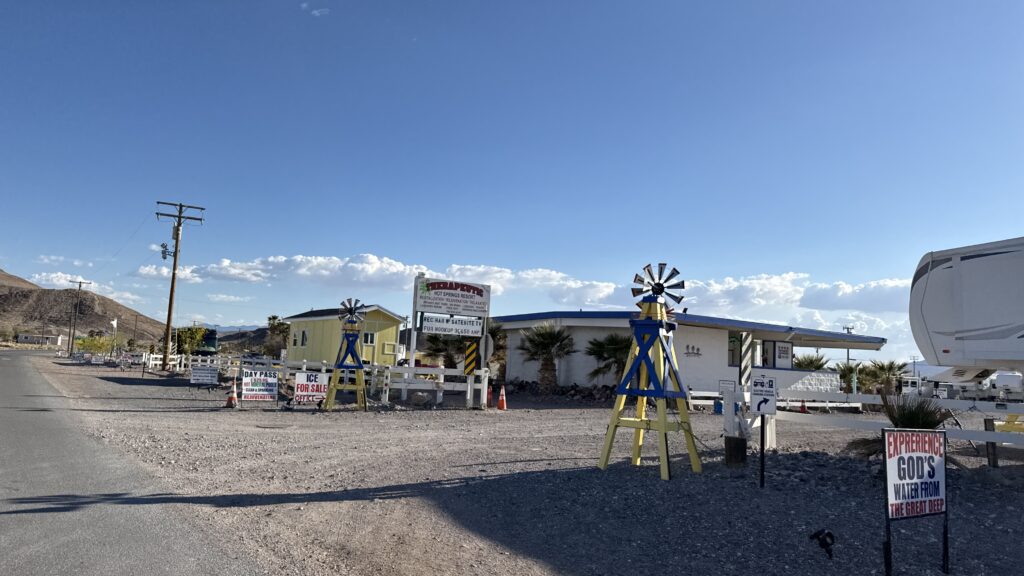
The recent exemption granted to Tecopa Palms Therapeutics Hot Springs Resort is noteworthy because it makes the facility the only hot springs in Tecopa currently operating according to regulations without continuous bromine or chlorine disinfection, according to Inyo County Environmental Health Director Jerry Oser.
Under California State Pool Codes, all public hot spring pools are required to maintain disinfectant levels with either chlorine or bromine to control bacteria and other harmful organisms. However, the county noted in the answers provided during the their recent campground RFP process, “If the pools have a high enough natural flow rate, operators may request exemption from continuous disinfection.”
That exemption now applies to Tecopa Palms. Oser confirmed: “Currently, Tecopa Palms is the only facility with the exemption.” The decision followed a sequence of inspections and water tests earlier this year.
Inspections, Complaints, and Compliance Efforts
On November 19, 2024, an inspection recorded a disinfectant residual of just 0.04 ppm, far below the 2.0 ppm required by state code. The inspector noted: “Per operator, chlorine or bromine are not added to spring water.”
A few months later, a complaint filed on February 22, 2025 alleged unsanitary conditions at the resort. According to county inspection records, the complainant reported: “Complainant used pool on 2/22/25 and noticed a slippery, slimy residual. Afterwards the complainant did not feel well and went to a doctor, who diagnosed a UTI.”
This triggered a new inspection on February 27, 2025, which again measured bromine at 0.04 ppm. However, the inspector also wrote: “I touched side of spa and steps – did not feel slimy.”
Following the February inspection, Oser issued a March 10, 2025 compliance letter, reminding the operator that state law requires a disinfectant residual unless a pool consistently meets the flow-through exemption standard in Health and Safety Code Section 65531. He emphasized the public health risks of untreated spas, including Legionella, Pseudomonas, and E. coli. “I recognize that your goal is to provide a natural, therapeutic experience for your guests, but the safety of spa users must come first,” he wrote.
Subsequent bacterial testing produced mixed results: the April 22 sample showed coliform present but E. coli absent, while the May 19 sample showed absence of both coliform and E. coli. After the passing May result, the county granted Tecopa Palms an exemption via email. Moving forward, the resort must submit monthly water samples during the operating season to maintain compliance.
A History of Trial and Error
The exemption carries echoes of Tecopa’s past. In the 1990s, as the California Pool Code was first implemented, county officials tested whether local hot spring baths could meet standards without disinfectants. Results were inconsistent, and failures became common when pools were crowded. Facilities—also including Delight’s Hot Springs, the Tecopa Hot Springs Campground, and Tecopa Hot Springs Resort—eventually adopted bromine as a more reliable solution than monthly lab testing.
Other operators continue to face challenges. In February 2025, Tecopa Hot Springs Resort tested at 0.14 ppm bromine, and Tecopa Hot Springs Campground at 0.3 ppm—both below the required 2.0 ppm. A September 2024 complaint inspection also documented algae on the sidewalls of Delight’s Hot Springs’ outdoor satellite pools. These records suggest that substandard disinfectant levels are not unique.
A Different Path
The current operators of Tecopa Palms, Ray and Yvonne Reed, chose to pursue the exemption as part of their philosophy against chemical disinfectants. In comments posted in August, Ray Reed described the difficulty of passing the strict “zero coliform” test:
“Mr. Oser shared with me that it’s virtually impossible to pass the ‘0’ tolerance for total coliform test. It’s not just about fecal matter or pant base organisms, causing coliform – it’s about any coliform period. How did I eventually pass the tests? Constant grief – CONSTANT.”
He described a rigorous process for ensuring pool users are thoroughly clean before bathing:
“To test ‘0’ for total coliform I have learned by trial and error, that it takes constant inspecting the water in the pools after each person or people exit the private pool. I must ensure (guarantee) that anyone entering the pools have thoroughly showered, with absolutely no makeup or bathing suits on including all shoes being left outside… Their body must be free of bacteria, dirt, and their mid sections clean. No swimming suits. EVER. Swimming suits carry body secretions from the front and the back.”
Looking Ahead
By passing the May test, Tecopa Palms secured an exemption that sets it apart from its neighbors. The approval allows the resort to reopen this season under its chosen system, though it comes with the responsibility of strict monthly bacterial testing and the risk that failure to meet standards could reinstate the chemical requirement.
“Mr. Reed will need to take monthly samples when the season picks up again,” Oser tells TecopaCabana. “I do want to reiterate that the water for this test comes from the pool itself and not a sample tap or faucet, and that’s why it’s so hard to pass. Any water exposed to the environment is prone to coliform contamination, and why coliforms are a good indicator organism for bigger problems.”
For now, Tecopa Palms stands alone in Tecopa as the only resort operating legally without continuous bromine or chlorine disinfection.
Death Valley National Park: Tourism Dollars, Storm Damage, and a Looming Shutdown
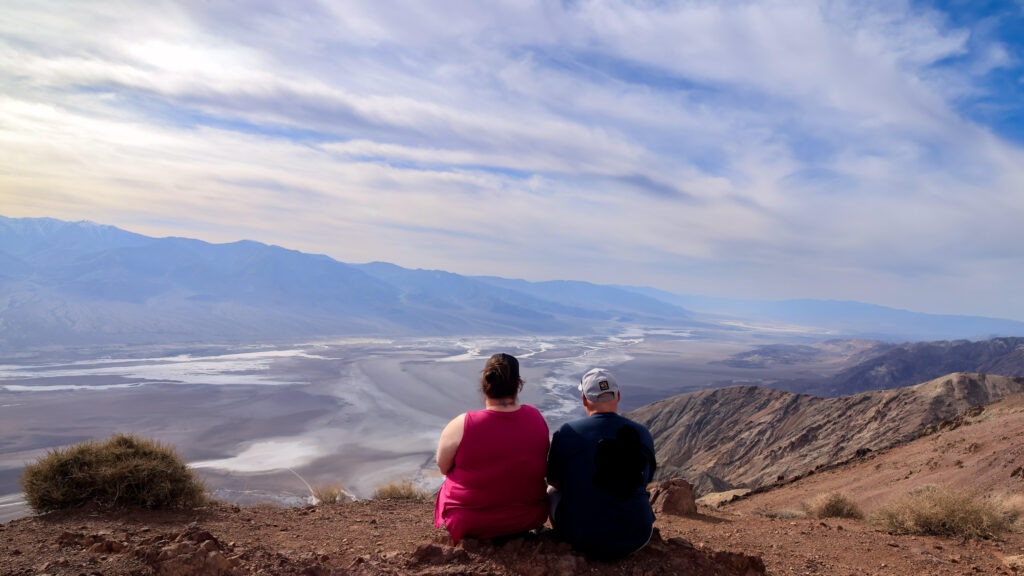
Two recent announcements from Death Valley National Park highlight both the region’s economic significance and its fragility—while national headlines add a new layer of uncertainty.
A new National Park Service report shows that in 2024, Death Valley hosted 1,440,484 visitors, generating an estimated $146 million in spending in nearby communities. According to Superintendent Mike Reynolds, the relationship between the park and its surrounding towns is “symbiotic.” Visitors rely on local businesses for food, lodging, and supplies, while their purchases support jobs and economic vitality. Of the total spending, about $47 million went toward hotels and $28 million toward restaurants, with additional dollars flowing into camping, groceries, fuel, and retail. Nationwide, visitors to national parks contributed $29 billion to gateway economies.
Even as tourism bolsters the region, nature has reminded travelers of the desert’s volatility. On September 18, the remnants of Tropical Storm Mario dropped 0.6 inches of rain at Furnace Creek—nearly a quarter of the park’s average annual rainfall in one night. The sudden deluge sent mud and rocks surging across roadways, forcing the closure of Badwater Road, North Highway, West Side Road, Twenty Mule Team Canyon, Cottonwood–Marble Roads, Mustard Canyon, and Keane Wonder Mine Road. Major routes such as CA-190, Daylight Pass, and Dantes View remain open, but staff continue to assess damage, with further closures possible. Visitors are urged to check current conditions before traveling.
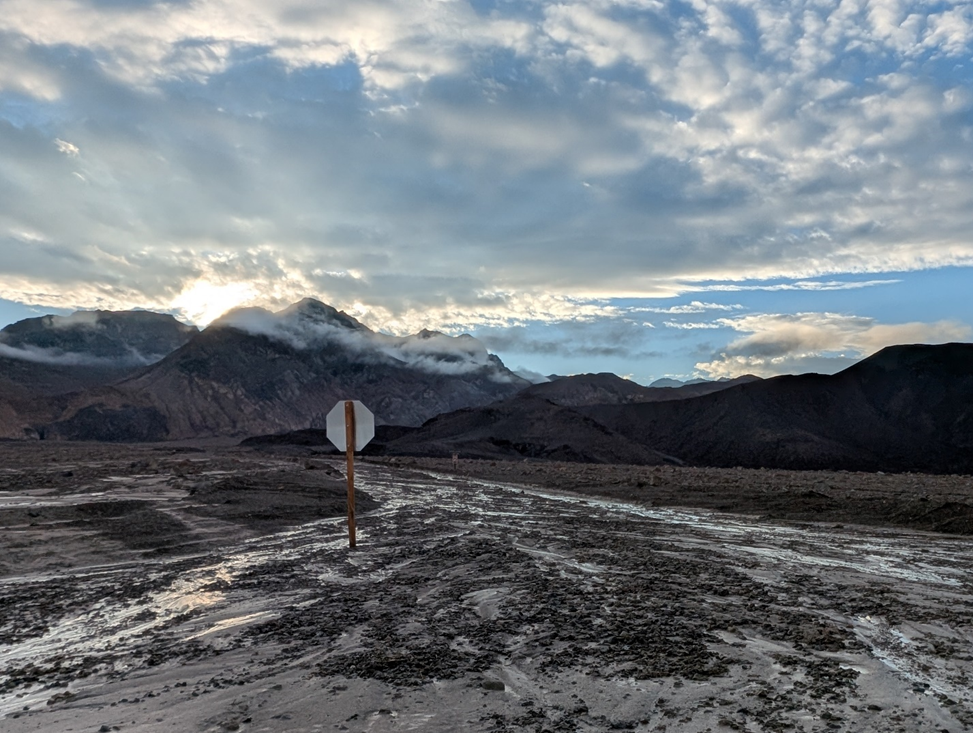
Now, a third challenge looms: the possibility of a federal government shutdown in Washington, D.C. The National Parks Conservation Association (NPCA) has warned that, absent a funding agreement, national parks could be forced to close entirely. Without adequate staff, open gates would leave sensitive areas vulnerable to vandalism, looting, and off-roading—damage witnessed during the 35-day shutdown of 2018–2019. At that time, Death Valley’s campgrounds saw sanitation problems, while fragile archaeological sites were scarred by illegal vehicles.
The NPCA notes that the Park Service has already lost nearly a quarter of its permanent workforce since January, raising the stakes of a shutdown even higher. “If the federal government shuts down, unfortunately our parks should too,” said Theresa Pierno, the association’s president, citing the risks to natural and cultural resources when parks are left open but unprotected.
Taken together, the updates capture the paradox facing Death Valley and its neighbors: a park that powers local economies and draws millions each year, yet remains deeply exposed to both natural forces and political decisions far beyond the desert horizon.
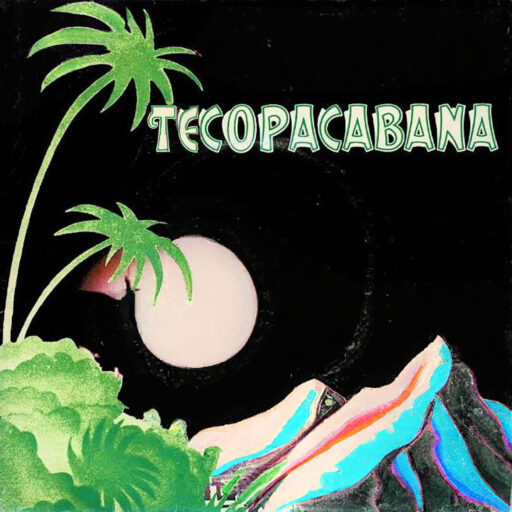
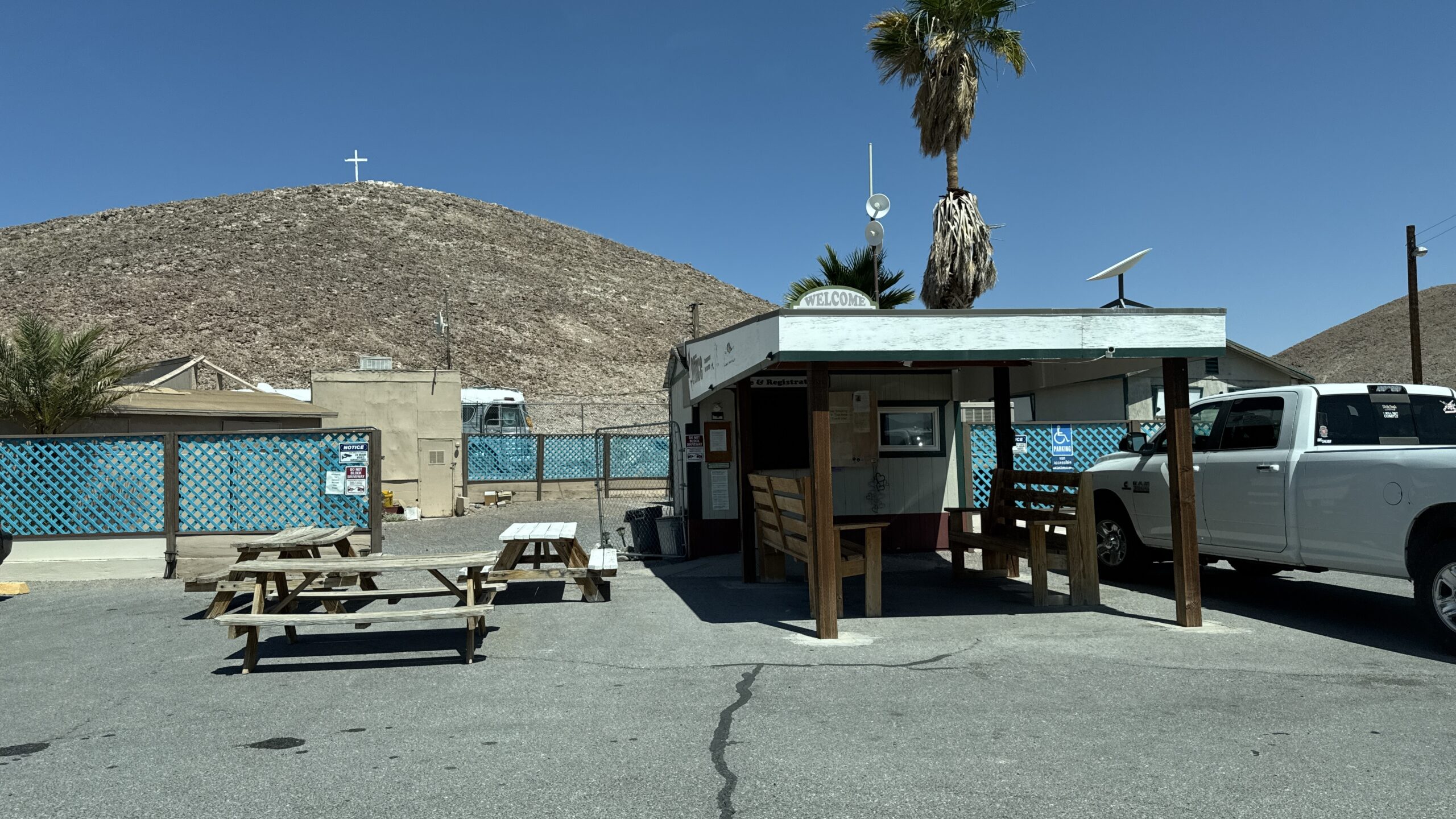
Leave a Reply